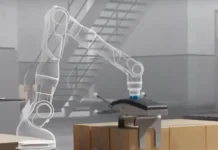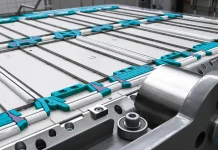by: James J. Mauro, Prinect Product Manager, Heidelberg USA, Inc.
Today’s aggressive printing environment is a by-product of fierce competition (from home and abroad); demanding customers, shorter turnaround times and runlengths; mergers and acquisitions; and increasing costs, all of which result in diminishing profit margins for printers. In many cases, the only way to compensate for low profit margins is to find more efficient methods of production. To this point, efficiency and automation based on JDF (Job Definition Format) have been the main topics in most trade events since drupa 2000.
The History of Data Exchange
The printing industry has invented and adopted “standard” formats since the beginning of modern workflow (mid-80’s). In those days it was nearly impossible to exchange page or image data between pagination systems (now called workflow systems) supplied by different vendors. The only way to achieve a harmonious workflow was to invest in a proprietary system. Proprietary was not only good, but it was the only way to achieve production.
With the Apple Macintosh computer came easy-to-use and (then) unsophisticated applications like QuarkXpress and Photoshop. This wave of new technology changed the graphic arts and printing industry on par with the invention of the Gutenberg printing machine and the Linotype machine. All of a sudden there were inexpensive computers, applications, and operators who could produce nearly the same high quality work as their more expensive counterparts. With this evolution came the need for ability to exchange image data between systems and as a result the industry invented image formats like TIFF (Tagged Image File Format) and DDES (Digital Data Exchange Standard). This seemed to work to some extent, but more was needed. Soon Adobe graced the industry with PDF, which was originally developed for the protection and sharing of simple documents. The printing industry caught wind of PDF and realized that it might be a useful format for handling otherwise huge page files. The rest is history. Or is it?
The Birth of JDF
The industry needed more than simply the ability to exchange image and page data. Printing presses became capable of remote ink control, meaning that a properly supplied file enabled the presetting of the ink fountains using digital data acquired from prepress. It was apparent that prepress systems of any kind would have to generate a file that could be delivered to printing presses that had this capability. In response, Adobe, Agfa, Heidelberg, and MAN Roland (known as the founding members of the CIP3/4 organization) developed the Print Production Format (PPF) for the automatic presetting of ink keys based on the same data used by the prepress RIP to generate film (later plates). This development was handed over to an independent organization which became the CIP3 Organization, which is why many people refer to a PPF as a “CIP3 file.” Since then, virtually every prepress RIP has the ability to generate a PPF. You would be hard-pressed to find a press with remote ink control that is incapable of accepting this file. But presetting inking systems was not enough for the fast moving train. The PPF was then extended to include preset data for many finishing systems. However, even with all the presetting capability that was becoming available, our industry still lacked the automated production of the sort found in many other industries. The next step toward workflow automation was realized with the Adobe Portable Job Ticket Format (PJFT) – workflows were automated using hot folders. But there was still no real integration with management systems.
There was still much room to expand and so the four founding members of the CIP3 Organization met again and embarked on the concept and development of a common language that could be used for integration and automation. The foundation for this language was XML (Extensible Mark-up Language). It was readily available and easy to work with so it was a no-brainer. JDF, the Job Definition Format, was born and was handed over to the CIP3 Organization, which morphed into the CIP4 Organization. As a result, we have JDF to preset, control, and record workflow, and JMF, the Job Messaging Format, which facilitates data collection through the direct integration of production systems. Thats the short story.
Since it was first announced at Drupa 2000, JDF is finally starting to gain some momentum and industry-wide acceptance. The current CIP4 roster includes over 330 members, which points to a growing interest and more importantly, a broad recognition of JDF by the printing community. The increasing deployment of JDF-based and/or enabled production workflows (there is a difference), as well as Management Systems, gives rise to the question as to where JDF is controlled in the production workflow. The proper deployment and integration of a JDF-based business and production environment promises to deliver a high level of automation, more efficient production, and more accurate cost analysis, all leading to more streamlined operations.
Workflow without JDF
Typically, Print Management Information Systems (MIS) are the systems to which all production activity is reported and by which the printer’s business is managed and controlled. The MIS essentially has been the starting, central, and end point in the business and production workflow. However, JDF-based workflow systems present the potential of shifting at least the production aspect entirely to the workflow, or the component which is sometimes referred to as the JDF store (where it belongs). Without the Job Definition Format, a typical production workflow would likely proceed as follows:
Jobs are estimated using the appropriate module of a Print Management System. As a result, a job ticket is produced (printed) and distributed through the shop, with operators logging their time and material usage through a shop floor data collection terminal which is part of, and connected to the MIS. In some cases, production machines are connected directly to the MIS providing more accurate machine production data collection (running speeds, printed sheets, etc.). At the end of production, all of the collected information is organized and used by the MIS to analyze production costs and efficiencies. In addition, other relevant information is used for payroll, warehousing, and other management, accounting, and operating activities of the shop. The main ingredient that is missing in this workflow model is not data collection or job distribution, but logical control of production. This is one area of efficiency where the use of JDF really proves valuable and demonstrates the need for us to rethink the way workflow will be structured in the future.
Using an MIS-centric workflow, all production transactions are typically (not always) processed manually through the MIS. There is little control as to when a job can be released from one stage of production to the next, except when operator A delivers the job jacket to operator B. This process can lead to the possibility of redundant data entry and also increases the potential of operator error, which can lead to honest, yet costly mistakes. The use of electronic JDF job tickets greatly reduces this likelihood but in a MIS-centered still does not address processing sequence-related issues. This is due to the fact that there is not a single information/production flow, but rather two paths: a MIS path (management and data collection) and a separate production path (moving the job bag from one production stage to the next).
Workflow with JDF
A production-centric JDF workflow offers a completely new logic in production automation, efficiency, visibility, control, and reliability. The JDF-centric production workflow system will validate the incoming JDF and control distribution throughout all stages of production.
A JDF-based production workflow places the production system at the center of the workflow and all other workflow components are essentially satellites, including the MIS, prepress, press, etc. This is a stark variation from the MIS-centric workflow in which, as previously described, the MIS is at the center production. In the JDF-centric Production Workflow, the MIS plays a critical role as it is the stage that the JDF is initiated and also is the receiver of all production data (via) for post-production analysis, accounting, etc. However, in this model the production data is not delivered directly to the MIS from production systems, but rather through the central JDF Workflow System, or JDF Server. As mentioned, it is the task of the JDF production workflow to accept and validate incoming JDF’s from the MIS, manage the distribution of the JDF (spawning and merging), collect JMF messages from integrated production systems, and deliver this information to the MIS for processing and analysis.
A JDF Workflow-based system presents a radical change in workflow philosophy and may be realized in the following scenario:
A job is estimated using the appropriate module of the JDF-enabled Print Management System. An electronic JDF job ticket is produced and delivered to the JDF Production Workflow system. The JDF is validated and forwarded to the prepress workflow for automated processing. JMF status messages are delivered to the central JDF workflow system upon completion of specific operations, and only when these operations are complete (i.e., proofing and plate-making) will the JDF be “released” and forwarded to the next stage of production, printing for example. At the press, the press operator loads the JDF job ticket through the press console, and the data included in the electronic JDF job ticket is used to preset the press with the manufacturing specifications as described originally in the MIS, as well as the ink presetting as derived from the prepress RIP (traditionally this has been achieved through the use of PPF – Print Production Format). As the press is running, it continuously reports production data (operator, job number, job name, sheet counter, running speed, production time, etc.) via JMF messages, through the JDF workflow system and ultimately to the MIS, enabling up-to-date production visibility. It is a highly transparent process and the same sequence continues through all stages of production, with the JDF workflow system providing live production information to the MIS. Operators using equipment that is networked and JDF-“aware” can log into the system through the machine interface, providing the benefit of fewer shop floor data collection terminals as well as highly accurate capture of production data (machine time, operator time, materials, etc.). In the same way, we can expect modern, JDF-based bindery equipment to not only accept machine presetting data but more importantly, highly accurate production data, fed to the production workflow via JDF. Operators using older equipment or equipment that is not JDF-compliant would use JDF-based shop floor data collection terminals, much as they are used today.
The main difference in this workflow is that production data collection (either by direct connection or by user terminals) is not a function or component of the MIS, but rather a JDF component/module of the centralized JDF workflow system, and that the MIS is not at the center stage of production. With a true JDF-based workflow, the production information path and the management information path are one in the same. This ultimately will lead to a more efficient and less error-prone workflow. Even the most conscientious employees make mistakes. It is human nature. Depending on when and where the error is detected directly affects the cost to correct even the simplest of mishaps. The worst place for errors to occur is in finishing. Incorrect cutting, folding, or stitching based on bad information or careless mistakes can result in costly reprinting. Any mistakes that can be avoided will result in a more profitable operation and enable a printer to increase equipment utilization. Given capacity, more jobs can be taken in-house without additional investment in labor or capital equipment.
Such a workflow would dictate that the Management Information System does, as its name implies, manage information, and empower the JDF production workflow to manage and control the production workflow. The MIS should manage non-production business activities, including warehousing, payroll, deliveries, invoicing, etc. The production workflow should manage the actual production of the job from initial processing though printing and finishing. The two systems must work together, which makes compliance to the CIP4-JDF specification an absolute necessity for efficient production and print job/shop management and performance.
It should be noted that at this time the current version of JDF is 1.3 and the CIP4-JDF specification (ICS – Interoperability Conformance Specification) for finishing systems has not yet been completed. Many enhancements to JDF, including finishing specifications are forthcoming in JDF 1.4, which is expected in the Fall of 2007. It is important that printers investing in new equipment (workflow and otherwise) consult with their vendors and clearly identify their JDF product status and roadmap. Also ensure that the systems being considered are either already JDF-based, or have a path to CIP-4 JDF compliance.
Our industry now has the means to bring efficient and streamlined automation to print production, from MIS to prepress to press and to the bindery.
Heidelberg’s Prinect family of integrated workflow management solutions provides maximum productivity and transparency throughout the workflow. With Prinect, Heidelberg is the only industry supplier to provide a totally integrated workflow from a single source. To learn more, visit www.heidelberg.com.




